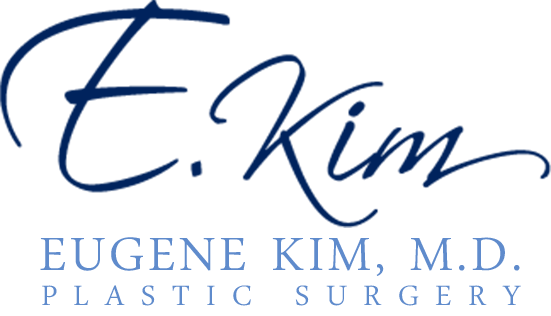 Undergoing breast augmentation is a significant decision that can enhance your confidence and satisfaction with your body. However, for those who lead an active lifestyle, questions often arise about how this choice will affect their fitness routine. Can you maintain the same level of physical activity? Will you need to modify your exercises? This comprehensive guide is designed to navigate the journey of maintaining your fitness regimen post-breast augmentation, ensuring you can return to the activities you love while prioritizing your health and well-being. Board certified plastic surgeon Dr. Eugene Kim provides breast augmentation to patients in Beverly Hills, Los Angeles, Santa Monica, West Hollywood, CA, and surrounding communities.
Undergoing breast augmentation is a significant decision that can enhance your confidence and satisfaction with your body. However, for those who lead an active lifestyle, questions often arise about how this choice will affect their fitness routine. Can you maintain the same level of physical activity? Will you need to modify your exercises? This comprehensive guide is designed to navigate the journey of maintaining your fitness regimen post-breast augmentation, ensuring you can return to the activities you love while prioritizing your health and well-being. Board certified plastic surgeon Dr. Eugene Kim provides breast augmentation to patients in Beverly Hills, Los Angeles, Santa Monica, West Hollywood, CA, and surrounding communities.
Understanding the Impact of Surgery on Physical Activity
Breast augmentation, while enhancing one’s confidence and body image, necessitates a period of recovery that directly influences one’s ability to engage in physical activities. The procedure involves incisions and the insertion of implants, which can have a considerable effect on the chest’s muscles and skin. It is during this healing phase that prioritizing recovery over physical exertion becomes paramount. Early postoperative days demand a reduction in physical activities to mitigate risks such as implant displacement or the heightened chance of injury. This adjustment period is a critical phase where the body’s limits should be acknowledged and respected. Activities that were once routine may now pose a risk, emphasizing the importance of adhering to recommended guidelines for physical engagement. The initial focus should squarely be on healing, setting the stage for a safer and more effective return to exercise routines in the future. Engaging too soon in activities that strain the chest or involve vigorous movements can disrupt the recovery process, potentially leading to complications. Hence, recognizing and adapting to the temporary limitations brought about by breast augmentation is a crucial step towards achieving a balanced and healthy transition back to one’s active lifestyle.
The Timeline for Resuming Exercise
The journey back to physical activity after breast augmentation is personalized, shaped by factors like surgical details and individual recovery speeds. Initially, engaging in gentle movements such as walking is encouraged shortly after the procedure to enhance blood flow. However, exercises that significantly elevate heart rate or blood pressure should be paused for the first couple of weeks to avoid undue stress on the body. As the recovery period progresses, around the 4-6 week mark, the reintroduction of moderate exercises can commence, always with the nod from the overseeing surgeon. It’s crucial to approach the reintroduction of high-impact activities and those that heavily involve the chest muscles with caution, typically waiting until at least 6-8 weeks post-operation to consider them. This graduated approach ensures the body is given ample time to heal, reducing the risk of complications and promoting a smoother transition back to more strenuous physical activities. Each step forward in this timeline should be measured and guided by professional advice to ensure the well-being and long-term results of the surgical procedure.
Modifications to Your Workout Routine
As you embark on the path to resuming exercise after breast augmentation, embracing modifications in your workout routine is essential. The focus should shift towards exercises that minimize stress on the chest and upper body, safeguarding the healing process. Initiating your return to fitness with lower body workouts and gentle cardio activities can serve as a foundation, avoiding any movements that could potentially jeopardize your recovery. During this initial phase, prioritize exercises that strengthen the lower body, such as squats, lunges, and light leg presses, which allow for physical engagement without impacting the surgical area.
Incorporating non-impact activities like swimming or stationary cycling can also be beneficial once approved by your surgeon. These activities offer cardiovascular benefits and help maintain overall fitness without the risk of causing strain to the chest muscles. As your body gradually heals, integrating exercises that focus on core strength, such as certain yoga poses or Pilates, can enhance stability and flexibility without undue pressure on the chest.
It’s important to be mindful of the body’s signals during this period. If any exercise induces discomfort or seems to strain the surgical area, it should be discontinued immediately. Consulting with a fitness professional who has experience in post-operative exercise regimens can also provide valuable insights into safely adapting your workout routine. By carefully selecting and modifying your exercises, you can maintain an active lifestyle while ensuring your recovery remains on track.
Importance of Proper Support During Workouts
Securing the correct support gear during physical activities post-breast augmentation is not just beneficial; it’s imperative for a smooth recovery and optimal workout performance. The dynamic nature of exercises, especially those involving the upper body, necessitates a sports bra that offers unparalleled support and minimizes breast movement. The impact of not wearing an appropriate sports bra can range from minor discomfort to significant setbacks in healing, potentially compromising the surgical results. In the early stages of recovery, your surgeon will likely recommend a specific support garment that is designed to cater to your new physique and support needs. This recommendation is based on the type of augmentation performed and your individual healing process.
As you progress and start incorporating more varied and vigorous exercises into your routine, the importance of a well-fitted sports bra cannot be overstated. Features to look for include adjustable straps for a customizable fit, wide bands that provide a secure hold without digging into your skin, and breathable, moisture-wicking fabrics that keep you comfortable and dry. The goal is to find a sports bra that feels like a second skin, offering support without restricting movement or causing irritation to incision sites.
Remember, the size and fit of your sports bra may change as you recover and as your body adjusts to the implants. Regularly assessing the fit and support level of your sports bra is essential to ensure ongoing protection and comfort during workouts. Choosing the right sports bra is a crucial step in maintaining an active lifestyle post-surgery, allowing you to focus on your fitness goals while safeguarding your health and surgical outcomes.
Communication with Your Plastic Surgeon
Having an open line of communication with your plastic surgeon is a critical component of your post-breast augmentation journey. As you navigate the path to resuming your fitness regimen, it’s vital to keep your surgeon informed about your activities and any concerns that may arise. Each individual’s recovery trajectory differs, making personalized advice from your surgeon invaluable. Before incorporating any new exercise or reintroducing activities that were part of your routine before surgery, seek the approval of your surgeon. They are best positioned to advise on the safest timeline for ramping up physical activity and can provide insights into which exercises are beneficial and which might pose risks during different stages of your recovery.
Additionally, your surgeon can help identify any necessary modifications to your exercise regimen to accommodate your healing process. This might include suggestions for alternative exercises or adjustments in intensity and duration. Their expertise is not only crucial in the early stages of recovery but also as you progress and adapt your fitness goals. This continuous dialogue ensures that your return to physical activity supports your recovery and complements the surgical results you’ve achieved. Consulting with your surgeon before making changes to your fitness routine underscores the importance of professional guidance in achieving a balance between maintaining an active lifestyle and ensuring a healthy recovery post-surgery.
Adjusting Expectations and Setting Realistic Goals
Adapting your fitness ambitions post-breast augmentation is essential for a smooth transition back into an active regimen. It’s crucial to acknowledge the significant transformation your body has undergone and allow ample time for recovery. Embracing small achievements, such as comfortably performing light exercises, is key to maintaining a positive outlook throughout this period. Patience is your greatest ally as you navigate this journey; rushing the process may hinder your progress rather than expedite it. By listening to your body’s cues and refraining from overexertion, you create a conducive environment for healing and gradual improvement.
Setting realistic goals becomes an integral part of this adaptation. Initially, your exercise capacity may not match pre-surgery levels, which is entirely normal. Acknowledging this shift and recalibrating your fitness objectives can prevent feelings of frustration and discouragement. Aim for gradual increments in the intensity and duration of your workouts, ensuring these adjustments are in harmony with your body’s tolerance and recovery stage. This strategy not only fosters a sustainable return to your desired activity levels but also prioritizes your health and the longevity of your surgical results. By thoughtfully adjusting your expectations and setting achievable milestones, you pave the way for a successful and fulfilling reintegration into your fitness lifestyle.
Contact the Office of Beverly Hills Plastic Surgeon Dr. Eugene Kim
Click here see more plastic surgery procedures and treatments performed by Board Certified Plastic Surgeon, Dr. Eugene Kim on patients in Beverly Hills, Los Angeles, West Hollywood, Santa Monica, CA and surrounding areas or call 310-271-6996 to schedule a consultation.
